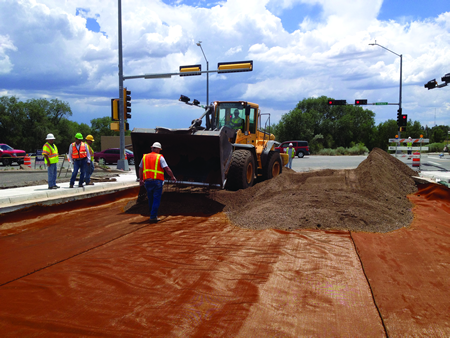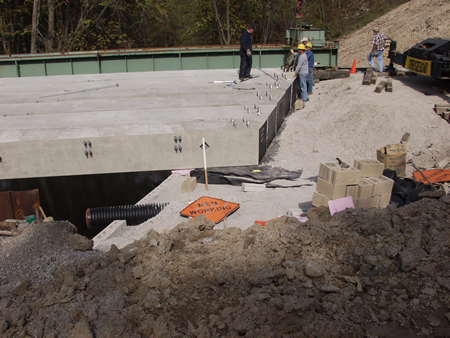
Geotextiles have been developed and installed in civil engineering projects since the 1950s. Largely emerging in response to flooding and storm events in the Netherlands and the United States, these synthetic “technical textiles” have grown substantially in use.
They commonly provide cushioning and protection, filtration and drainage, and soil separation characteristics.
Few geosynthetic-related projects, in fact, do not have some geotextile component.
The commonality of their use has made them, in large part, commodity products. Still, the material science behind geotextiles is significant. It continues to be an engineered material of growth and evolution, with new developments (e.g., fiber optic enhancements) and strengths every year.
Increased strength has been especially remarkable in geotextiles.
The January/February 2015 issue of Land and Water magazine includes an article from Geosynthetica’s editor, Chris Kelsey, on the use of geotextiles in more robust civil engineering works.

any additional structural elements needed. Photo by Warren Schlatter, Defiance
County (OH) Engineers Office.
The construction of geosynthetic-reinforced soil in bridge abutments (per FHWA’s GRS-IBS design) is one such sector in which these “fabrics” are excelling. They provide strong economical value upfront, limit land disturbance, reduce or eliminate requirements for specialized labor, limit special aggregate needs, and greatly reduce project times (e.g., from 6 months to 6 weeks).
Roadways previously reinforced only with geogrids or complex aggregate layers are using high-strength geotextiles. This is true from standard infrastructure and for more unique climates, such as guarding against frost boils and frost heave for mining and oil and gas access roads in Alaska.
High-strength geotextiles are available widely too; they aren’t limited to one supplier.
Kelsey’s article outlines some of the history in geotextile development, the success of designs such as the Geosynthetic-Reinforced Soil – Integrated Bridge System (GRS-IBS), and some of the products and manufacturers in the field at the moment.
Download a copy in PDF via the link above.
For more stories from Land and Water, visit the publication’s website: www.landandwater.com.
SEE ALSO
- History of Geosynthetics: Filter Fabrics Emerge from a 1957 Storm
- A Brief History of Geotextiles
- Mitigating Frost Heave in Alaska
Chris Kelsey is the editor of Geosynthetica and has written about geosynthetics and geotechnical engineering for 15 years.











